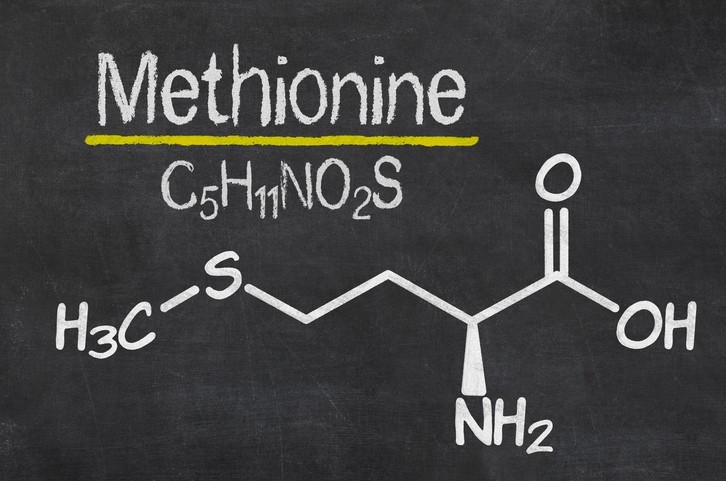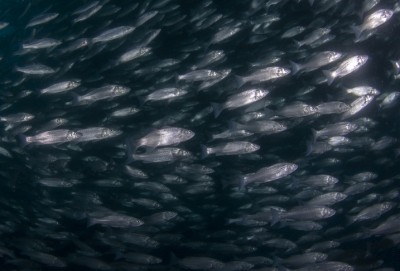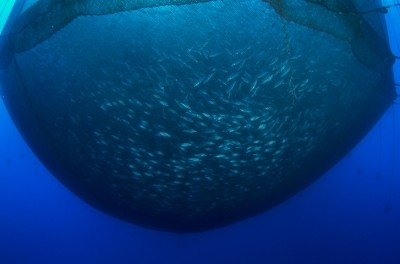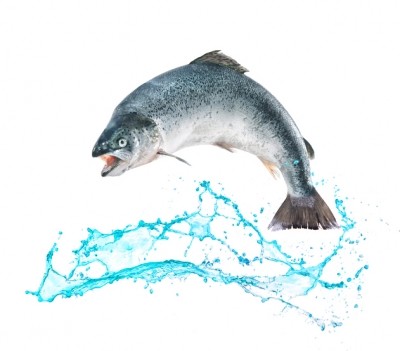Study questions level of methionine required in sea bass diets

An international team of researchers from Brazil, Portugal and Spain examined the use of supplemental methionine (Met) and taurine (Tau) in low-fishmeal diets for juvenile European sea bass. The team published its work in the journal Aquaculture.
“The present study aimed at evaluating the effect of Met and Tau supplementation to a practical plant-based diet on growth performance, body composition, and oxidative status in juvenile European sea bass, a major marine finfish species of interest for the European aquaculture,” said the researchers.
The group found that the amount of methionine recommended for use in sea bass diets may be higher than is needed, the researchers said. However, both amino acids were found to modulate the antioxidant response in fish.
“Overall, results of the present study indicate that European sea bass juveniles perform well with a plant feedstuff based diet with a Met level 12% below the established requirement for the species and without Tau supplementation,” said the researchers. “Dietary Met and Tau supplementation to the diet modulate both hepatic and intestinal antioxidant response, but do not affect overall liver and intestine oxidative status.”
Why methionine and taurine?
Increases to both the cost of, and demand for, fishmeal (FM), along with efforts to improve the sustainability of aquaculture have had producers searching for alternative feed formulations, said the researchers. Plant-based feed ingredients have been substituted for FM, although they may not offer balanced amino acids (AA), include anti-nutritional factors, have less protein and reduced digestibility and palatability.
High levels of FM replacement often supplement limiting AAs including methionine, lysine (Lys) to support growth, feed efficiency and survival, they said. Met is required for protein synthesis and for several methylation reactions, they said. And, oxidation of Met residue protects cells from oxidative stress.
Met also indirectly alters glutathione synthesis (GSH) and influence cells oxidative status, they said. “In fact, previous observations in mammals revealed that an increase of oxidative stress, with consequent reduction of GSH, led to an enhancement of Met trans-sulfuration in order to meet Cys [cysteine] demand for GSH synthesis,” they added.
Taurine, another indirect antioxidant, can be synthesized by some fish, but the ability varies between species, said the researchers. It is now considered a conditionally indispensable amino acid (CIAA) and to play a role in cell membrane stabilization, modulation of calcium levels, anti-inflammation, osmoregulation and bile acid conjugation.
It is found in high levels in FM but is not readily available in plant proteins, they said. Plant-based feeds need to be supplemented with the AA.
Some marine fish raised on low-FM feeds have developed “green liver syndrome” from the reduced excretion of Tau-conjugated bile pigment and the over generation of hemolytic biliverdin, they said. But this can be offset with Tau supplementation.
“In another species such as the totoaba (Totoaba macdonaldi), supplementation of 1% Tau to a diet with 60% FM replaced by soy protein concentrate was shown to restore lipid peroxidation levels and to increase catalase activity and the activity of key enzymes of the intermediary metabolism to the levels observed in fish fed the FM control diet,” said the researchers.
European sea bass, can be raised on a diet high in plant proteins, without Tau supplementation, they said. It is considered that, at least juvenile European sea bass have some ability to biosynthesize Tau.
However, more work is needed to better understand the link between Met, Cys and Tau with the use of low-FM feeds, said the researchers. “Their physiological roles, especially at the oxidative status level, deserves our attention,” they added.
Methods and materials
In the study, fish were given one of four trial diets for a period of 12 weeks, said the researchers. The diets included 82% plant protein and 18% fishmeal and had either more methionine (HMet) than required or less (LMet), and either 1% supplemental taurine or no additional taurine.
Feed intake and mortality were noted daily, they said. At the end of the feeding trial sample fish were collected to test for whole-body analysis and to provide whole-fish, liver and viscera weights, which were checked for hepatosomatic index (HSI) and visceral index (VI).
Liver samples were assessed for enzyme activities and oxidative stress enzymes including superoxide dismutase (SOD) and, catalase (CAT), glutathione peroxidase (GPX), oxidized glutathione (GSSG), protein concentration and glucose-6-phosphate dehydrogenase (G6PDH), they said.
Total glutathione (tGSH) also was measured, said the researchers. And, growth performance, feed use and whole-body composition were established.
Results
No influence from supplementation was seen on growth, feed utilization or whole body composition, said the researchers. “At the end of the trial, there were no differences among groups on whole-body composition, HSI, and VI, except for the ash content that was higher in fish fed the high Met diets,” they added.
However, boosting Met levels increased CAT and GPX presence in the liver and tGSH and glutathione in the intestine and lowered glutathione reductase (GR) and GPX in the intestine, they said. GR and SOD levels were not altered by diet.
“In the present study, although the Met level of the LMet diet (0.75% diet) was lower than the reported Met requirement for this species, growth and feed utilization was not affected, indicating that fish were able to overcome this apparent marginal Met deficiency,” said the researchers. “Feed intake between dietary treatments was also not affected, and given that one primary consequence of feeding fish a diet with IAA [indispensable amino acids] imbalances is the reduction in voluntary feed intake (de la Higuera, 2001), this result also attests for the absence of a severe IAA deficiency.”
Supplemental Tau lowered intestinal tGSH, GSH and oxidized glutathione content along with GPX activity in the liver and intestine, they said. It also reduced glucose-6-phosphate dehydrogenase in the liver and altered both hepatic CAT and intestinal GR activity – in conjunction with a high Met level.
“Overall, European sea bass seems to cope well with a plant-protein rich diet without Met or Tau supplementation,” said the researchers. “Both dietary Met and Tau were shown to modulate fish antioxidant response but without altering the oxidative damage level.”
Source: Aquaculture
Title: Effects of dietary methionine and taurine supplementation to low-fish meal diets on growth performance and oxidative status of European sea bass (Dicentrarchus labrax) juveniles
DOI: 10.1016/j.aquaculture.2017.06.017
Authors: Coutinho, R. Simões, R. Monge-Ortiz, W. Furuya, P. Pousão-Ferreira, S. Kaushik, A. Oliva-Teles, H. Peres















